Abstract
The adsorption and elution of a variety of human enteroviruses in a highly permeable, sandy soil was studied by using cores (43 by 125 mm) collected from an operating recharge basin on Long Island. Viruses studied included field and reference strains of polioviruses types 1 and 3 and reference strains of coxsackie virus B3 and echovirus types 1 and 6. Viruses suspended in treated sewage effluent were allowed to percolate through soil cores, and the filtrate was assayed for unadsorbed viruses. To determine the likelihood of desorption and mobilization, soil-bound viruses were subjected to a rinse with either treated sewage effluent or simulated rainwater which reflected the anion, cation, and pH characteristics of a typical northeastern United States rainfall. The results demonstrated that all polioviruses tested, including both reference and field strains, adsorbed extremely well to cores. Adsorption was somewhat reduced when clean, unconditioned soils were used. Soil-bound poliovirus strain LSc was not significantly mobilized by flooding columns with either a sewage effluent or rainwater rinse. One virus was mobilized by both types of rinses. The amount of viruses mobilized by rainwater rinses ranged from 24 to 66%. Variable adsorption-elution results were observed with other enteroviruses. Two guanidine-resistant mutants of poliovirus LSc demonstrated a soil adsorption-elution profile different from that of the parent strain. The data support the conclusion that soil adsorption-elution behavior is strain dependent and that poliovirus, particularly strain LSc, represents an inappropriate model.
Full text
PDF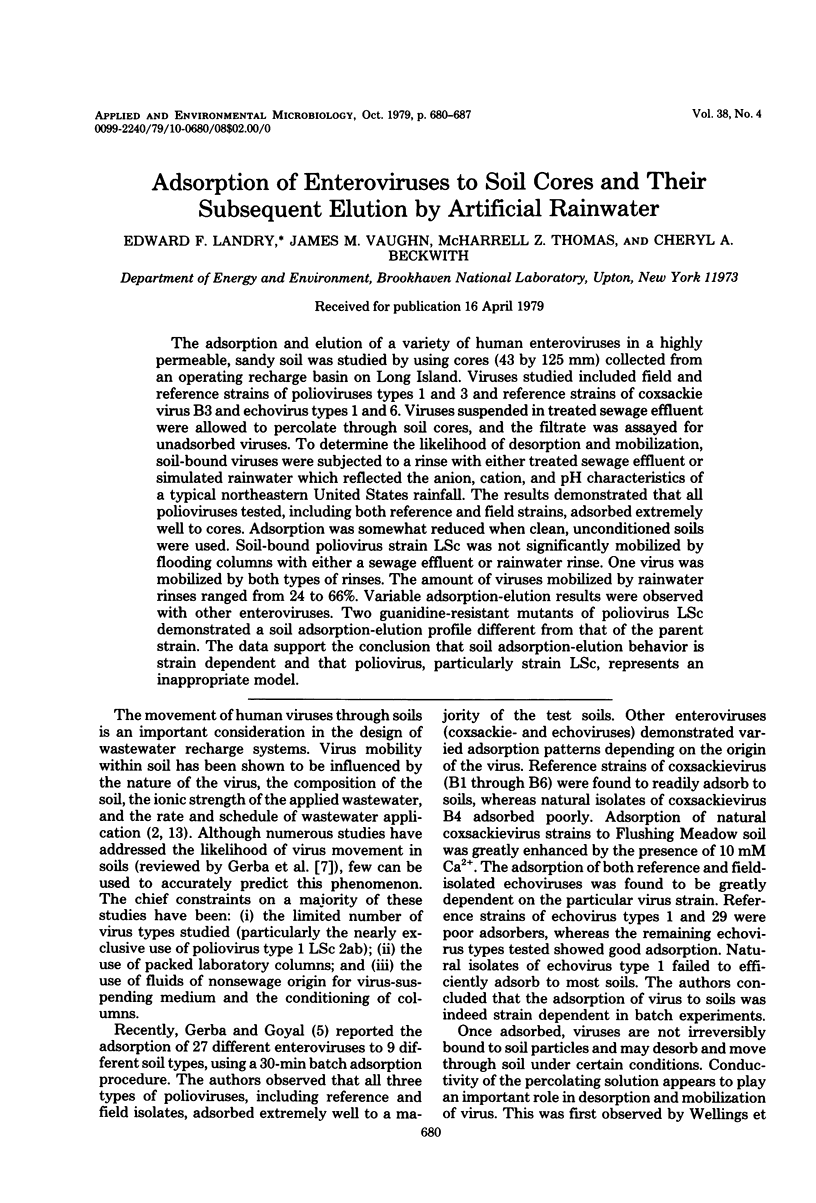
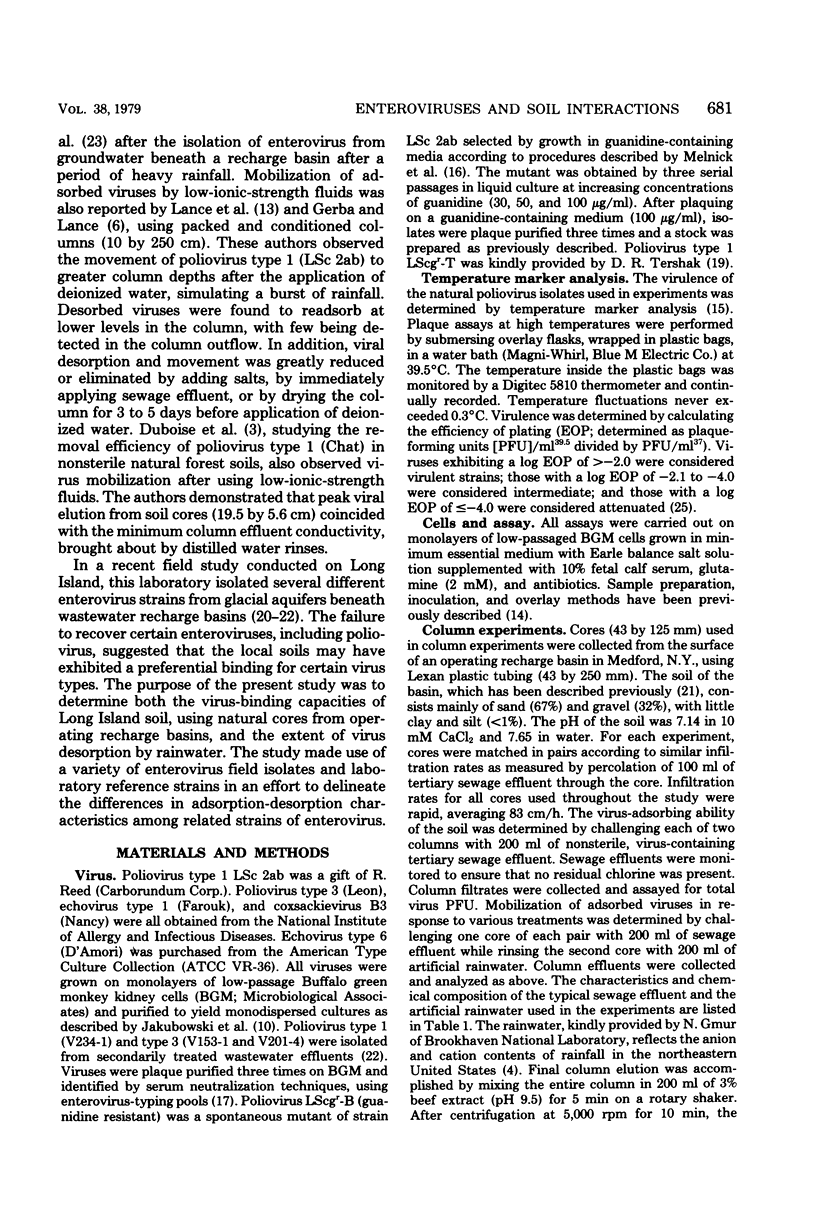
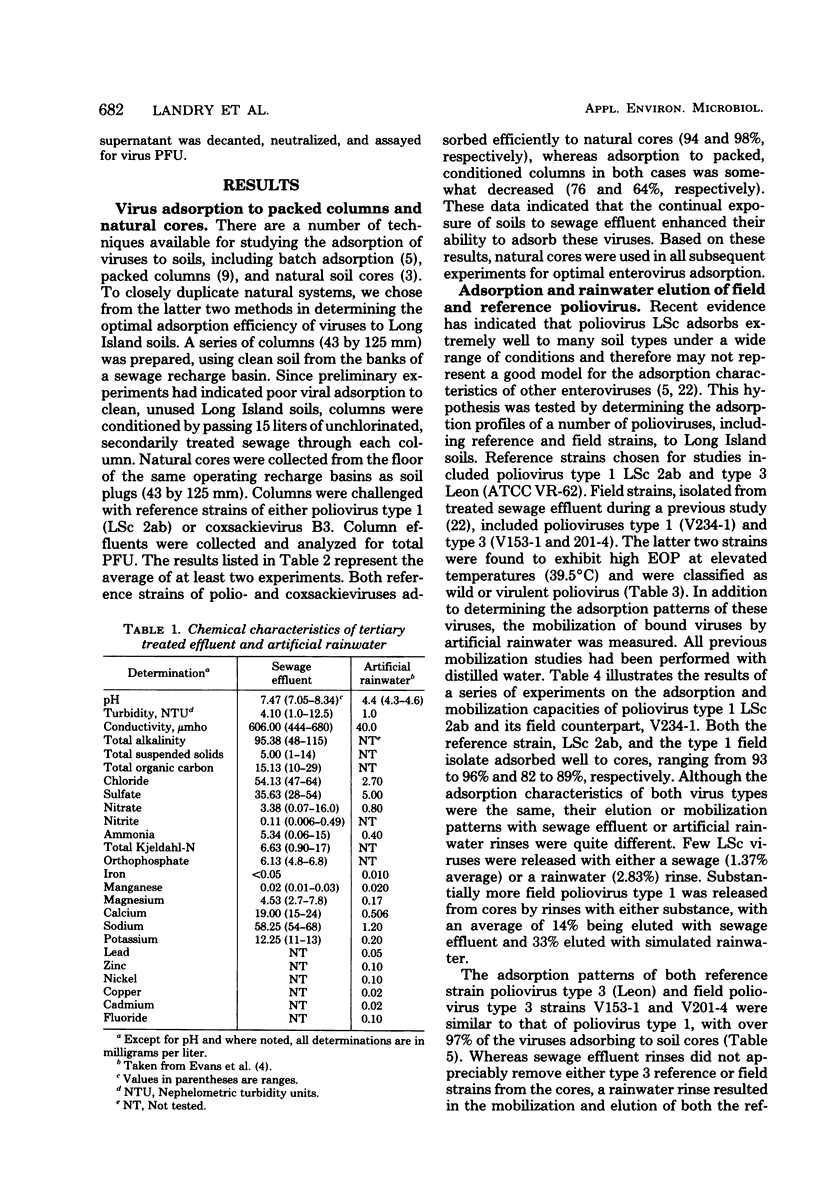
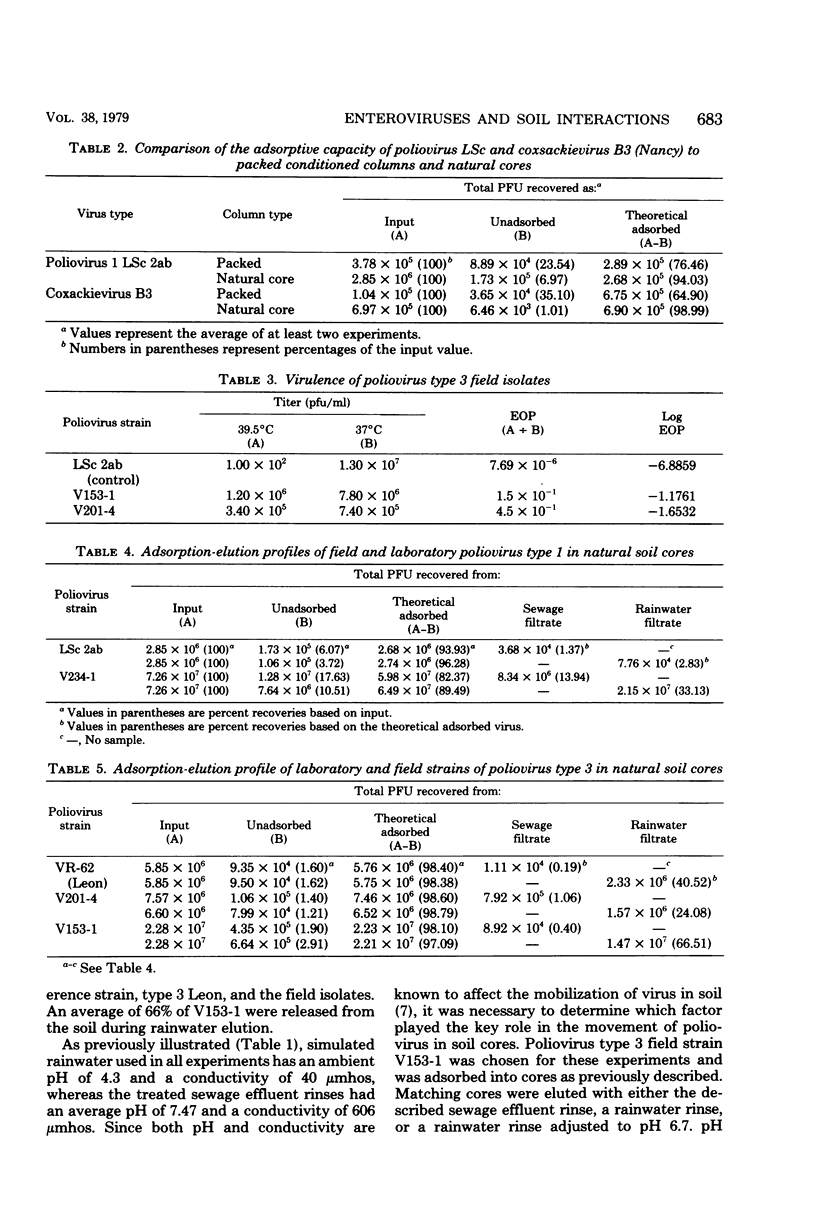
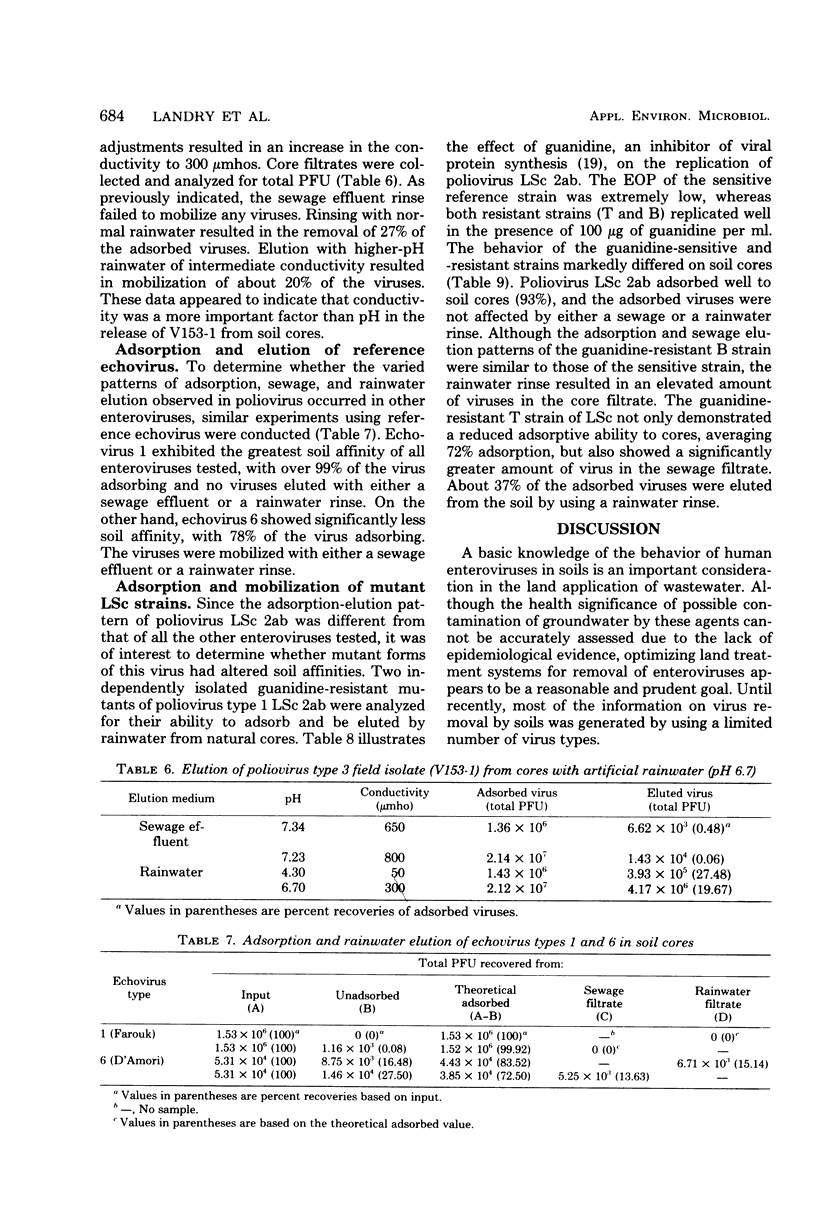
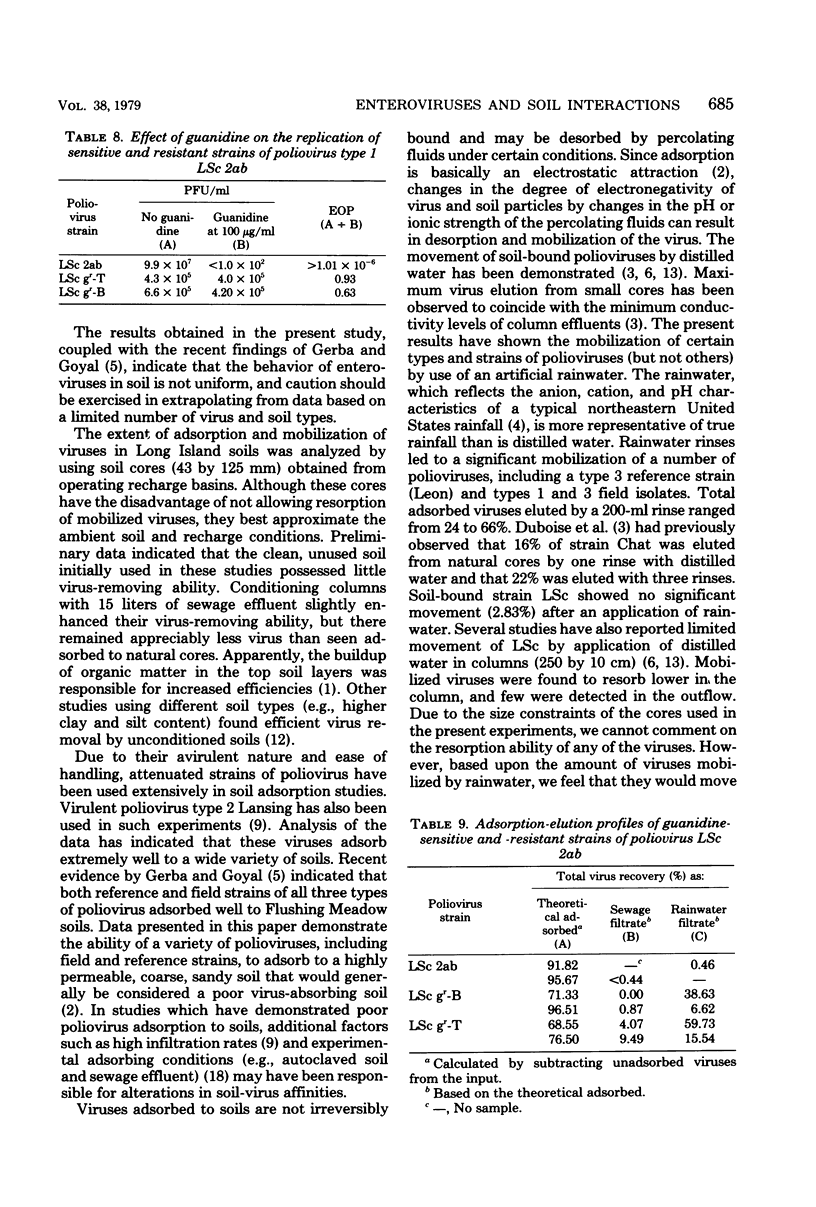
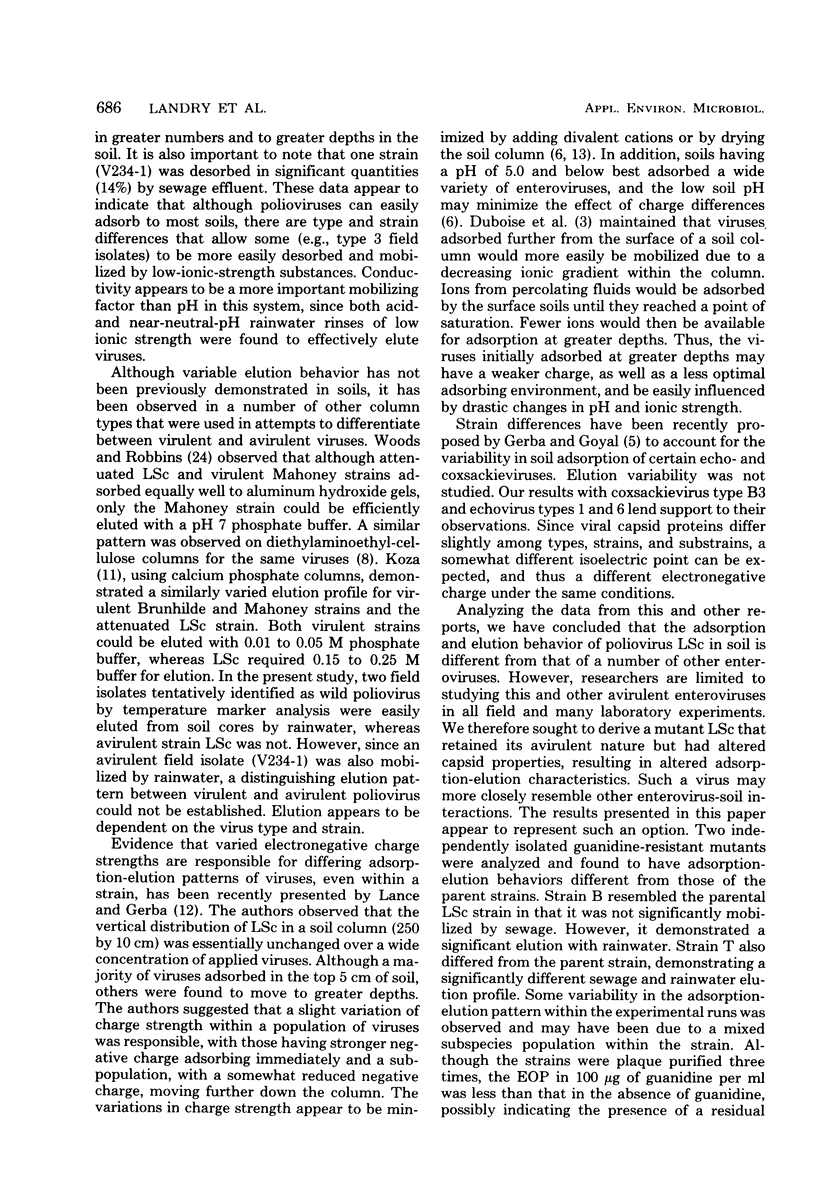
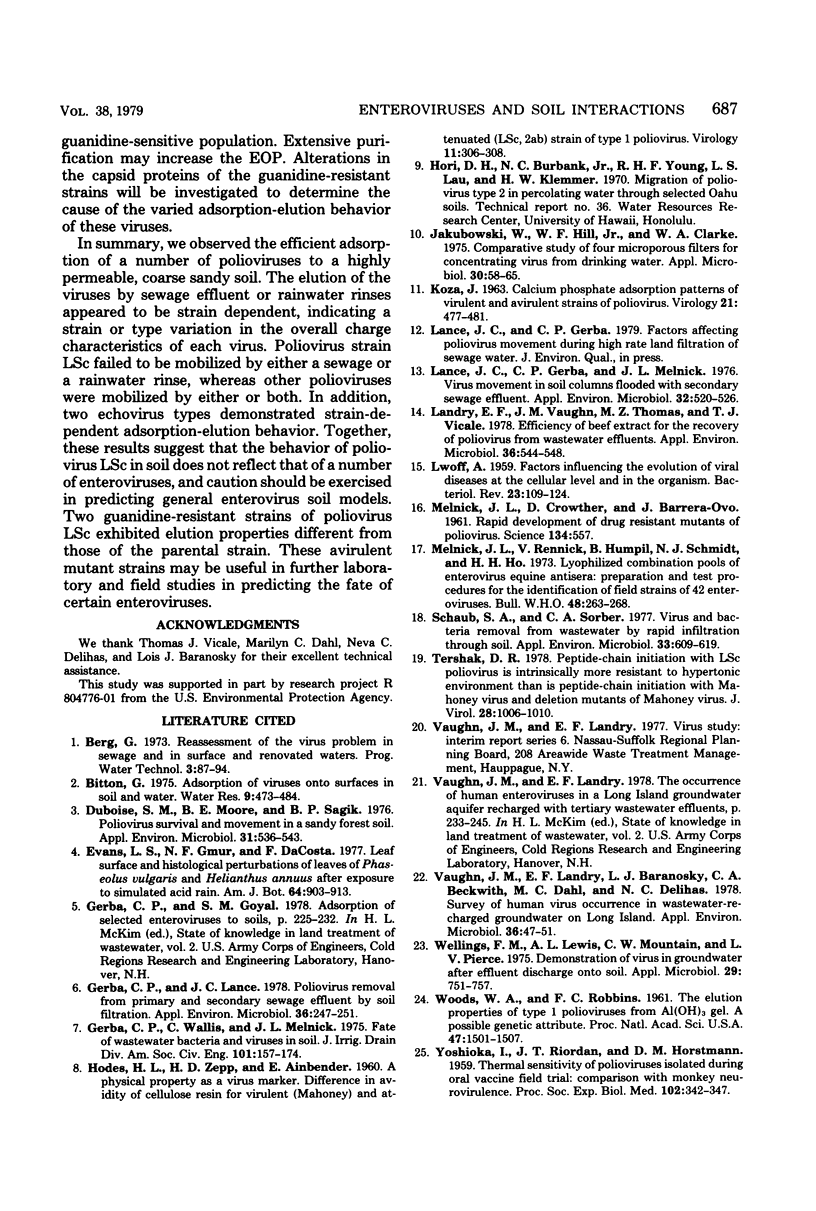
Selected References
These references are in PubMed. This may not be the complete list of references from this article.
- Duboise S. M., Moore B. E., Sagik B. P. Poliovirus survival and movement in a sandy forest soil. Appl Environ Microbiol. 1976 Apr;31(4):536–543. doi: 10.1128/aem.31.4.536-543.1976. [DOI] [PMC free article] [PubMed] [Google Scholar]
- Gerba C. P., Lance J. C. Poliovirus removal from primary and secondary sewage effluent by soil filtration. Appl Environ Microbiol. 1978 Aug;36(2):247–251. doi: 10.1128/aem.36.2.247-251.1978. [DOI] [PMC free article] [PubMed] [Google Scholar]
- HODES H. L., ZEPP H. D., AINBENDER E. A physical property as a virus marker. Difference in avidity of cellulose resin for virulent (Mahoney) and attenuated (LSc, 2ab) strain of type 1 poliovirus. Virology. 1960 May;11:306–308. doi: 10.1016/0042-6822(60)90073-8. [DOI] [PubMed] [Google Scholar]
- Jakubowski W., Hill W. F., Jr, Clarke N. A. Comparative study of four microporous filters for concentrating viruses from drinking water. Appl Microbiol. 1975 Jul;30(1):58–65. doi: 10.1128/am.30.1.58-65.1975. [DOI] [PMC free article] [PubMed] [Google Scholar]
- KOZA J. CALCIUM PHOSPHATE ADSORPTION PATTERNS OF VIRULENT AND AVIRULENT STRAINS OF POLIOVIRUS. Virology. 1963 Nov;21:477–481. doi: 10.1016/0042-6822(63)90208-3. [DOI] [PubMed] [Google Scholar]
- LWOFF A. Factors influencing the evolution of viral diseases at the cellular level and in the organism. Bacteriol Rev. 1959 Sep;23(3):109–124. doi: 10.1128/br.23.3.109-124.1959. [DOI] [PMC free article] [PubMed] [Google Scholar]
- Lance J. C., Gerba C. P., Melnick J. L. Virus movement in soil columns flooded with secondary sewage effluent. Appl Environ Microbiol. 1976 Oct;32(4):520–526. doi: 10.1128/aem.32.4.520-526.1976. [DOI] [PMC free article] [PubMed] [Google Scholar]
- Landry E. F., Vaughn J. M., Thomas M. Z., Vicale T. J. Efficiency of beef extract for the recovery of poliovirus from wastewater effluents. Appl Environ Microbiol. 1978 Oct;36(4):544–548. doi: 10.1128/aem.36.4.544-548.1978. [DOI] [PMC free article] [PubMed] [Google Scholar]
- MELNICK J. L., CROWTHER D., BARRERA-ORO J. Rapid development of drug-resistant mutants of poliovirus. Science. 1961 Aug 25;134(3478):557–557. doi: 10.1126/science.134.3478.557. [DOI] [PubMed] [Google Scholar]
- Melnick J. L., Rennick V., Hampil B., Schmidt N. J., Ho H. H. Lyophilized combination pools of enterovirus equine antisera: preparation and test procedures for the identification of field strains of 42 enteroviruses. Bull World Health Organ. 1973;48(3):263–268. [PMC free article] [PubMed] [Google Scholar]
- Schaub S. A., Sorber C. A. Virus and bacteria removal from wastewater by rapid infiltration through soil. Appl Environ Microbiol. 1977 Mar;33(3):609–619. doi: 10.1128/aem.33.3.609-619.1977. [DOI] [PMC free article] [PubMed] [Google Scholar]
- Tershak D. R. Peptide-chain initiation with Lsc poliovirus is intrinsically more resistant to hypertonic environment than is peptide-chain initiation with Mahoney virus and deletion mutants of Mahoney virus. J Virol. 1978 Dec;28(3):1006–1010. doi: 10.1128/jvi.28.3.1006-1010.1978. [DOI] [PMC free article] [PubMed] [Google Scholar]
- Vaughn J. M., Landry E. F., Baranosky L. J., Beckwith C. A., Dahl M. C., Delihas N. C. Survey of human virus occurrence in wastewater-recharged groundwater on Long Island. Appl Environ Microbiol. 1978 Jul;36(1):47–51. doi: 10.1128/aem.36.1.47-51.1978. [DOI] [PMC free article] [PubMed] [Google Scholar]
- WOODS W. A., ROBBINS F. C. The elution properties of type 1 polioviruses from A1(OH)3 gel. A possible genetic attribute. Proc Natl Acad Sci U S A. 1961 Sep 15;47:1501–1507. doi: 10.1073/pnas.47.9.1501. [DOI] [PMC free article] [PubMed] [Google Scholar]
- Wellings F. M., Lewis A. L., Mountain C. W., Pierce L. V. Demonstration of virus in groundwater after effluent discharge onto soil. Appl Microbiol. 1975 Jun;29(6):751–757. doi: 10.1128/am.29.6.751-757.1975. [DOI] [PMC free article] [PubMed] [Google Scholar]
- YOSHIOKA I., RIORDAN J. T., HORSTMANN D. M. Thermal sensitivity of polioviruses isolated during oral vaccine field trial: comparison with monkey neurovirulence. Proc Soc Exp Biol Med. 1959 Nov;102:342–347. doi: 10.3181/00379727-102-25241. [DOI] [PubMed] [Google Scholar]


